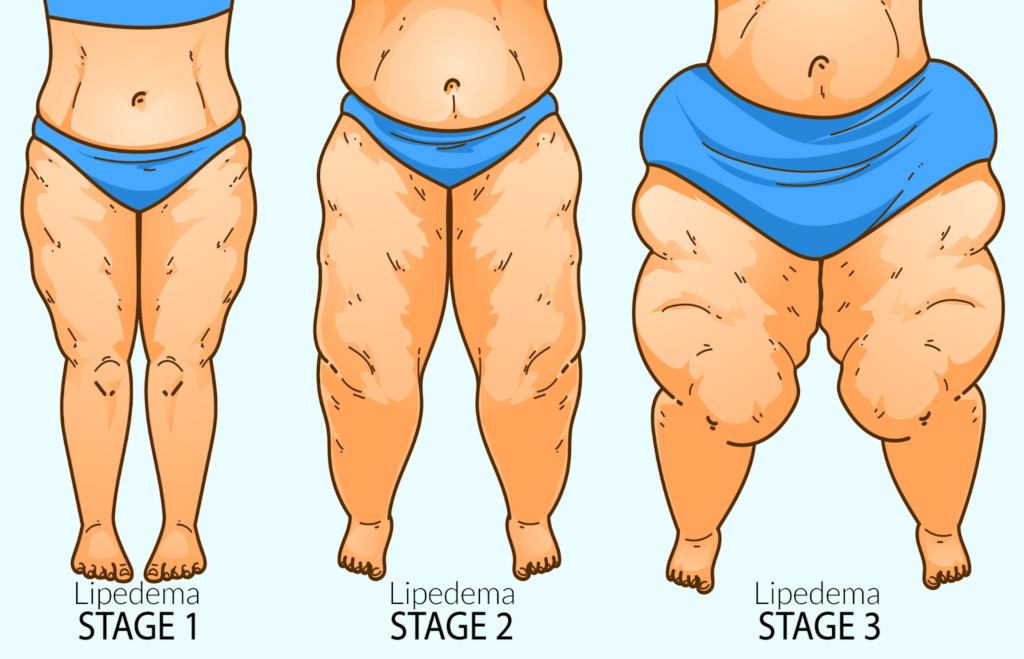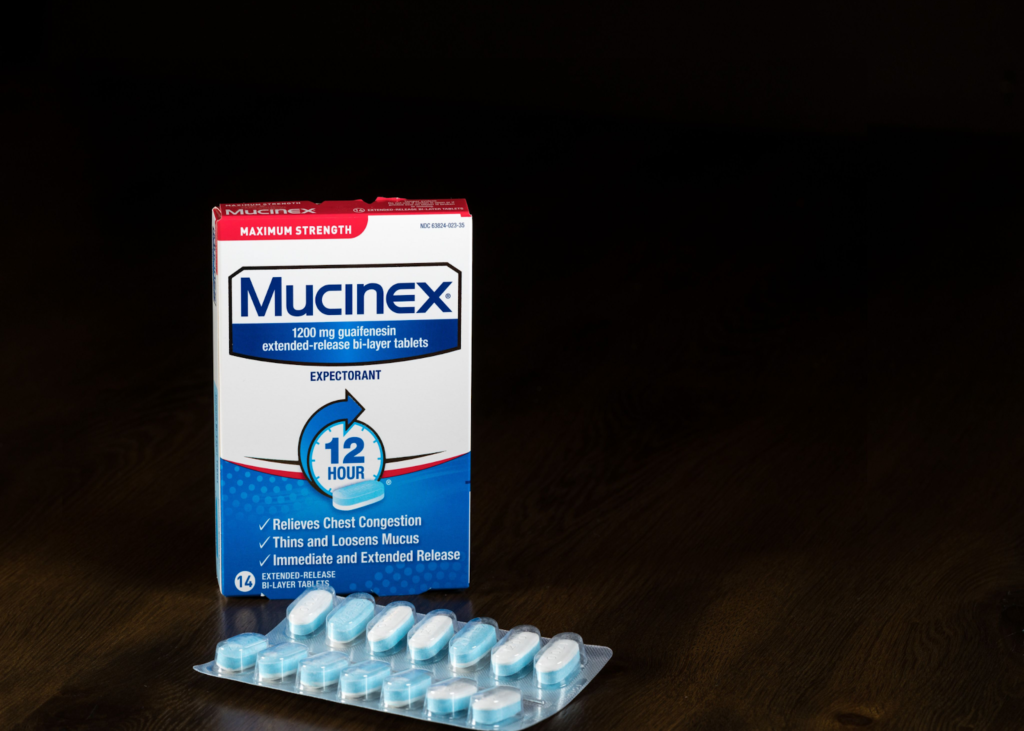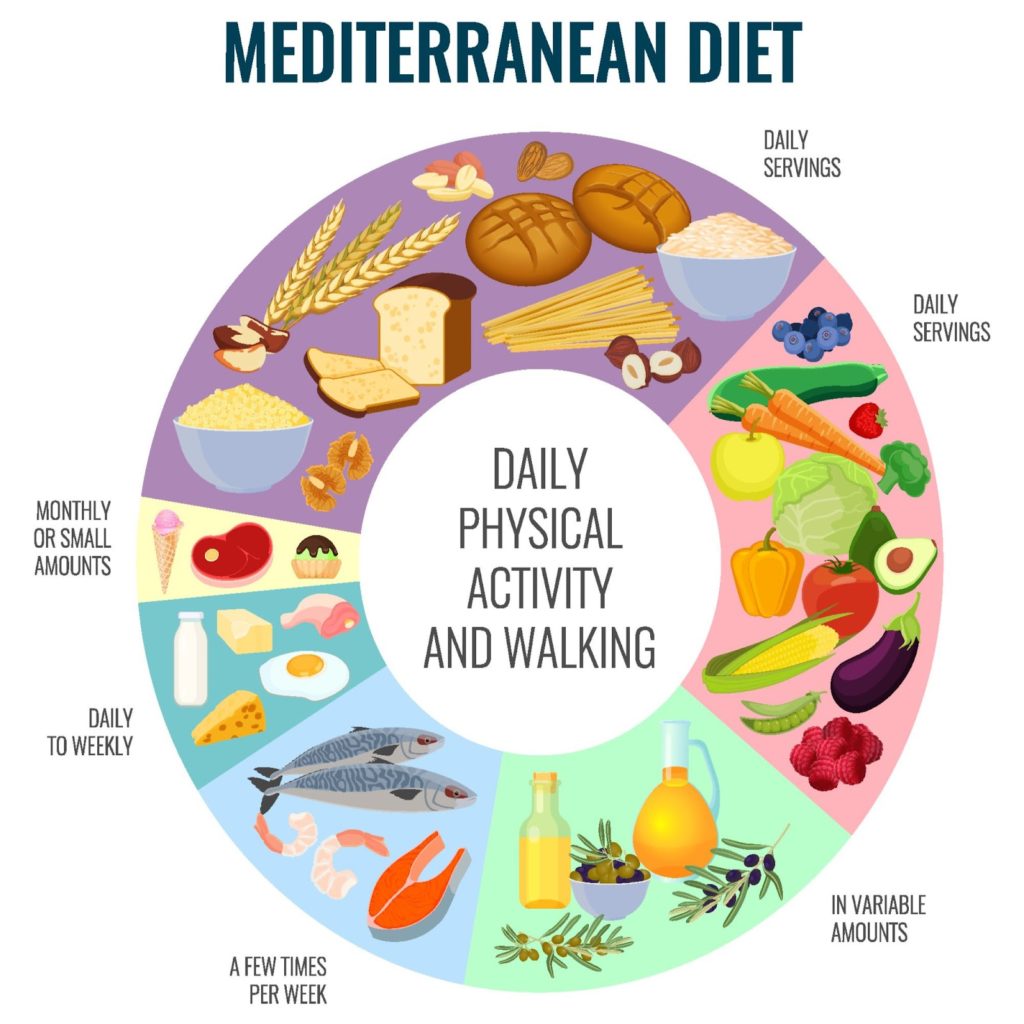Lipedema is a fat disorder, mainly affecting women, that causes an enlargement of both legs due to deposits of fat under the skin. It’s characterized as a “progressive disorder,” meaning it generally gets worse over time. Sufferers living with lipedema experience easy bruising and tenderness, pain in the affected areas, and significant disability in daily life. In severe and more progressive cases, the trunk and upper body may also be affected, including the arms and upper back. Little is known about the disorder, and it’s often misdiagnosed and incorrectly treated as general obesity.
For anyone affected, diet and exercise alone aren’t effective ways to get rid of Lipedema fat; Lipedema fat has proved relatively immune to these lifestyle changes and won’t budge. While women are likely to experience some weight loss with a healthy diet and regular exercise routines, weight loss is usually mostly loss of non-Lipedema fat. In these instances, the painful, stubborn fat remains. This cycle becomes a difficult one to break for those with the disorder: Yo-yo dieting leads to more weight gain. More weight gain leads to increased pain and disability. Increased pain and disability make it more challenging to manage mobility and secondary obesity increases. Lipedema fat also appears to be relatively resistant to bariatric surgery, meaning many women are undergoing dangerous surgeries without experiencing the intended benefit of significant loss of lipedema fat.
Lipedema vs. Obesity
Unlike common obesity, Lipedema is comprised of fat deposits and swelling that typically does not affect the feet or hands; it’s as if patients are wearing a tight bracelet or rope at their wrists or ankles that causes every above to swell and everything below to remain unaffected. At more progressive stages, the swelling increases and leads to a diagnosis of lymphedema, which makes it even less likely Lipedema is diagnosed and treated promptly and adequately.


Despite the strong impact of Lipedema on millions of women across the world, only limited research exists to determine its cause. In many cases, the genetic background can provide some context, but enough research has yet to offer a comprehensive understanding of the disease.
Dr. Wright and his team at St. Louis Laser Lipo & Vein Center have put together a helpful list of Lipedema Do’s and Don’ts for living with this difficult disease.
DO: Take This Cold Medication Regularly
Guaifenesin, best known by the brand name Mucinex©, and often prescribed as an over-the-counter expectorant to treat the common cold, may help reduce lipedema swelling and inflammation.


To our knowledge, there are no published, controlled studies showing the use of Guaifenisn to treat lipedema or lymphedema. However, there are abundant reports from clinicians and lipedema patients stating Guaifenisn helps lipedema. In our limited clinical experience, about 20 – 30 % of lipedema patients report reduced pain and/or swelling when taking this medication. Plus, there are reports of Guaifenisn being used for pain relief to treat other diseases. Guaifenesin has shown modest but significant analgesic and anti-inflammatory effects in neck and back pain and some other conditions. It is thought guaifenesin may be working as a muscle relaxant effect that occurs in these conditions. Mucinex / guaifenesin may help pain or it may work as an expectorant in lipedema tissue and thin out extracellular proteins. However, there are no studies to support these theories in lipedema.
Guaifenesin for Lipedema: Dose and Use
Guaifenesin is approved for safe use at 600 mg twice a day (or 1,200 mg twice a day) for no more than 2,400 mg per day. Studies in the use of Mucinex for other medical conditions report it takes a least a week to see effects. I recommend lipedema suffers try this medication for two weeks to see if they notice any positive changes in addition to their consistent treatment plans including compression, supplements, and a healthy diet as prescribed. May not be suitable for people with a persistent cough due to asthma, bronchitis, emphysema, or smoking, or who have a cough that is producing excessive amounts of phlegm. Talk with your doctor first before using Mucinex if you are pregnant or breastfeeding.
DO: Use Diosmin to Combat Lipedema
Diosmin is a flavonoid extract made from orange peels used to treat vein disease. Diosmin helps reduce inflammation along vein walls in people with chronic venous insufficiency and it can also have very positive results for people with lipedema and lymphedema.


Benefits
- Reduces white blood cell activation, migration, and adhesion
- Decreases capillary permeability and stimulates lymphatic flow
- Less leg heaviness, swelling, and tenderness
- Diosmin infused intravenously results in a nearly 200% increase in measured lymphatic flow
In a recent case study, Diosmin had positive results when used in combination with other supplements, diet, compression, and other anti-inflammatory measures to non-surgically manage lipedema. Based on these studies, and my experience prescribing Diosmin to patients, I recommend Diosmin as part of an overall conservative management treatment plan for lipedema and lymphedema.
Where to Get Diosmin for Lipedema
In the United States, Diosmin is sold under the brand name Vasculera, which is available in pharmacies by prescription from a physician. Vasculera is approved by the FDA as a medical food.
Diosmin is also available as a supplement without a prescription. We recommend Vein Formula, as we trust its formulation. Be sure to order any supplements from a reputable website for the best safety and quality. Link https://vitasupportmd.com/products/vein-formula-1000
DON’T: Treat Lipedema with Fat Freezing
Fat freezing—also known as cryolipolysis (or Cool Sculpting) uses cold temperature to reduce fat deposits in certain areas of the body. The procedure is designed to reduce localized fat deposits that do not respond to diet and exercise. It is not intended for people who are obese or significantly overweight. Currently, there is no published research on cryolipolysis for lipedema. Most lipedema fat is not the type of localized fat deposit for which this procedure is intended. Cryolipolysis can cause Paradoxical Adipose Hyperplasia (PAH). This condition can aggravate symptoms, and lead to worsening of lipedema.
DO: Adopt a Mediterranean Diet & Active Lifestyle (Instead of Keto!)
Researchers from Stanford University found both diets improved blood glucose and led to comparable weight loss. However, this study shows keto may elevate LDL cholesterol, lacks essential nutrients, and is more difficult to maintain over time.


Study: During the study, 30 adults with prediabetes or type 2 diabetes followed the Mediterranean diet and the keto diet for 12 weeks each. Both diets served non-starchy vegetables and avoid added sugars and refined grains, but there are three key differences between them: the Mediterranean diet incorporates legumes, fruits, and whole grains – keto does not.
Results:
- A1c values improved after baseline on both diets, and levels did not differ between them
- Keto saw a bigger decrease in triglycerides (16% vs. –5%)
- LDL cholesterol was higher in keto dieters (+10% vs. 5%)
- Both diets had similar weight loss (8% keto vs. 7% Mediterranean)
- HDL cholesterol increased (11% keto vs. 7% Mediterranean)
- Keto had a lower intake of fiber and three essential nutrients: folate, vitamin C and magnesium
- More likely to adhere to Mediterranean over keto, suggests Mediterranean is more sustainable
Note: Please work with a doctor or nutritionist to choose a dietary pattern that fits your needs and preferences. The potential harms of higher LDL associated with keto cannot be dismissed.
Exercising can help to activate the lymphatic drainage system in a patient’s limbs through the foot and calf muscle pump. Workouts that aren’t too strenuous help to move the excess fluids out of affected limbs, as well as reduce additional fat buildup.
The lymphatic system differs from the blood circulatory system in that it does not have a muscle “pump” to move fluids into the lymphatic system and eventually return back into circulation. Because of this, good lymph flow depends on proper joint and muscle activity. This is especially true if the lymphatic system is compromised. Individuals suffering from lipedema can receive a great benefit when engaging in diaphragmatic breathing exercises. These exercises are especially beneficial when they are combined together with other parts of a decongestive regimen.
Because fat disorders and lymphedema can often feed into one another, exercise is a great option to help combat both. With its dual purpose of clearing out excess lymph fluid and burning fat, exercise offers exactly what patients need to deal with these disorders.
Types of Exercise


The types of exercise used should be focused on the individual patient’s needs and ability. Additionally, it is important to use compression garments when exercising whenever possible. Compression garments help to promote blood circulation and lymph fluid flow, which can be severely inhibited in patients who suffer from fat disorders and lymphedema.
Living with Lipedema? Start Your Life-Changing Journey
Even with all the challenges presented by lipedema, there are those who you can trust. Dr. Wright continues to strive for better education, research, and coverage for the lipedema community. Do not let these challenges bring you down even further; let Dr. Wright and his expert team help you to reduce the symptoms of lipedema and live your life fully! Dr. Wright can help find the right procedure to help manage your lipedema symptoms. Don’t let lipedema take over your life; contact us today!
References
Albert-Adrien Ramelet, MD, Pharmacologic Aspects of a Phlebotropic Drug in CVI-Associated Edema
First Published January 1, 2000
Scholar.google Diosmin Effect on Lymphatic Function
A lymphatic function of Daflon 500 mg
Int Angiol. A lymphatic function of Daflon 500mg., 1995 Sep; 14(3 Suppl 1):36-8
Recommended Sources for Diosmin: Vitasupport MD




